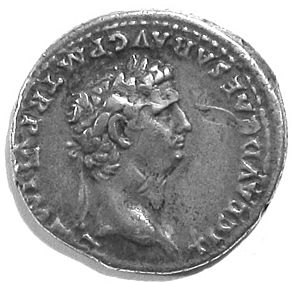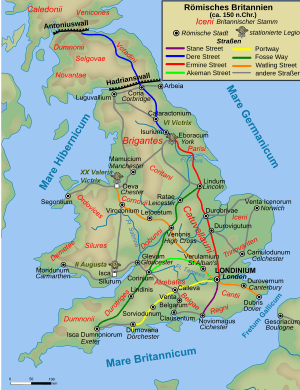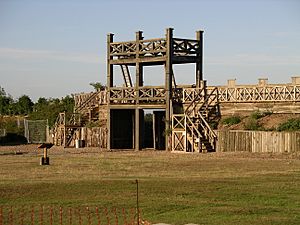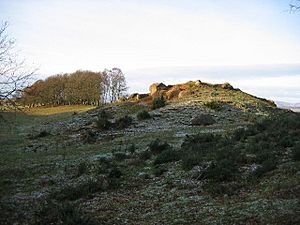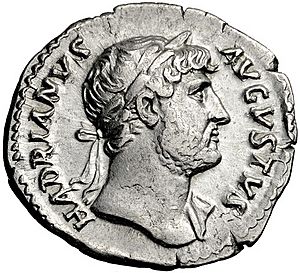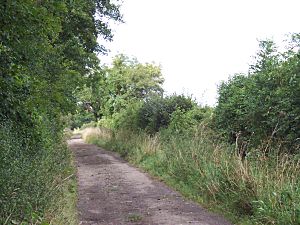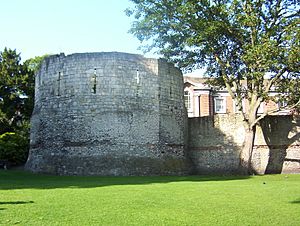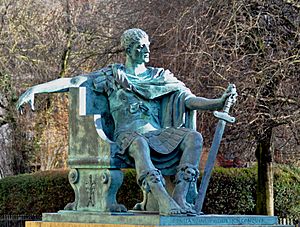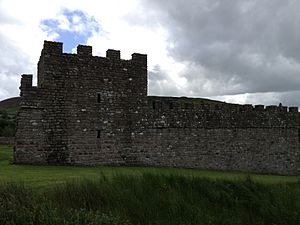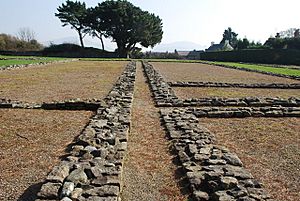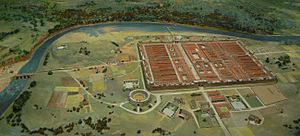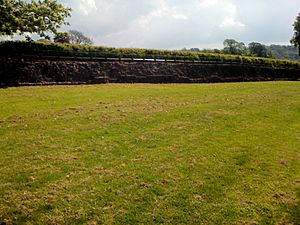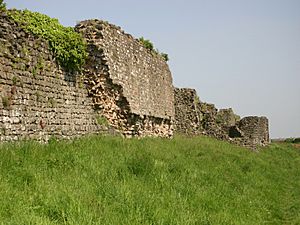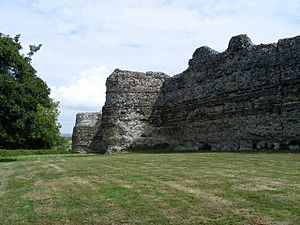Limes Britannicus facts for kids
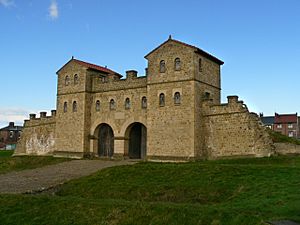

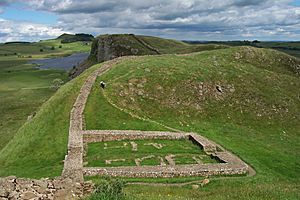
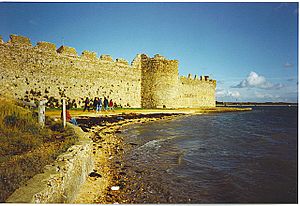
The Roman Empire's border in Britain is sometimes called the Limes Britannicus. This name refers to the walls and forts built to protect Roman Britain. These defenses were used from the 1st to the 5th centuries AD. They stretched across what is now England, Scotland, and Wales.
Britain was a challenging part of the Roman Empire in Europe. It took a lot of effort for the Roman army to control it. Even though Claudius' general, Aulus Plautius, quickly won battles in the south in 43 AD, the local people kept fighting for a long time. Still, the Romans managed to strengthen their control. However, the Roman soldiers had to defend Britain on three sides. Attacks from tribes in the north were a constant problem. To the west and south, they had to protect against attacks from Ireland and Germanic peoples.
Despite these challenges, the Roman Empire held onto Britain for almost 300 years. Many people believe Roman rule was good for Britain. It brought a long period of peace and wealth to the island. Behind the strong protection of Hadrian's Wall and the natural coastlines, the area we now call England was greatly changed by Roman ways of life. Hadrian's Wall and the forts along the Saxon Shore are still important symbols of Roman rule in Britain.
Contents
Roman Soldiers in Britain
After the fighting in the south calmed down in the late 1st century, Britain became known for having a huge number of Roman soldiers. For the next 300 years, about 10-12% of the entire Roman army was stationed there. This was a lot, considering Britain was only 4% of the whole Empire. The legions, helper units, and the navy were all led by the Roman governors of the province.
At its peak, the Roman army in Britain likely had 35,000 to 40,000 soldiers. This large number wasn't just because the British people fought hard against the Romans. It's also possible that Britain's location, far away at the edge of the Empire, was seen as a good place to keep any rebellious legions busy and isolated. Even some of their commanders were known for causing trouble.
Britain is surrounded by water, which made it harder for soldiers there to start a rebellion against the emperor. However, in 185 AD, 1,500 British javelin throwers marched all the way to Rome. They even killed the emperor Commodus' chief guard and his family. It's still a mystery how these soldiers got so far into the Empire without being stopped. Perhaps people in Rome thought the troops in Britain were too far away to be a real threat. Later, in the 3rd century, during the time of the Gallic Empire and British Empires, the soldiers in Britain often supported leaders who tried to take power from the emperor.
Roman Legions in Britain
In the first 40 years after the invasion in 43 AD, four Roman legions were based in Britain. After that, the number was reduced to three until the end of Roman rule. Their main bases were in:
- Eburacum (modern York)
- Isca Silurum (modern Caerleon)
- Deva (modern Chester)
Together, these legions had about 15,000 soldiers.
| Time Period | Legion Name | Main Locations |
|---|---|---|
| 1st to 5th centuries | Legio II Augusta | |
| 1st century | Legio II Adiutrix Pia Fidelis | |
| 2nd to 5th centuries | Legio VI Victrix Pia Fidelis | |
| 1st and 2nd centuries | Legio IX Hispana | |
| 1st century | Legio XIV Gemina Martia Victrix | |
| 1st to 3rd centuries | Legio XX Valeria Victrix |
Auxiliary Troops in Britain
More than half of the Roman soldiers in Britain were from helper units, called auxilia. These units were rarely mentioned in old writings.
Under Emperor Hadrian, there were 14 cavalry (horseback riding) regiments. Each of these ala units had about 500 soldiers. There were also 45 infantry (foot soldier) battalions, called cohortes peditae, each with about 480 soldiers.
Here are some terms you might see:
- civium Romanorum = Roman citizens
- equitata = partly mounted (some soldiers on horseback)
- milliaria = 1,000 men strong
| Cavalry Units | Mixed Cavalry/Infantry Units | Infantry Units (Part 1) | Infantry Units (Part 2) |
|---|---|---|---|
|
ala Augusta Gallorum Petriana milliaria civium Romanorum |
cohors I Augusta Nerviana Germanorum milliaria equitata |
cohors I Menapiorum |
cohors I Tungrorum milliaria |
The Roman Fleet in Britain
The Roman navy in Britain, called the Classis Britannica, was in charge of watching the waters around the British Isles. It started with the ships used during the Roman invasion. These naval units often worked closely with the ground troops. They were also very important for bringing supplies to the Roman army in the province.
The fleet played a big role in the campaigns of Gnaeus Julius Agricola in northern Britain. Its crews explored the coasts of Ireland and Scotland and even sailed all the way around Britain. When the forts along the Saxon Shore were built in the 3rd century, the fleet became even more important. A writer named Vegetius, who wrote in the late 4th century, mentioned that the provincial fleet still existed then.
The main job of these warships was to keep the important sea route between Britain and Gaul (modern France) safe. This route went from Dover to Calais. The fleet's main port in Britain was probably Dubris (Dover) at first. Later, under Carausius, the fleet's command center was moved to Portus Adurni (Portchester). After that, it was moved again to Rutupiae (Richborough).
Images for kids
-
The North: reconstructed wooden tower in Vindolanda


